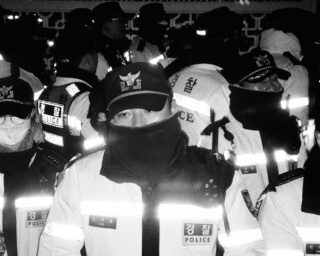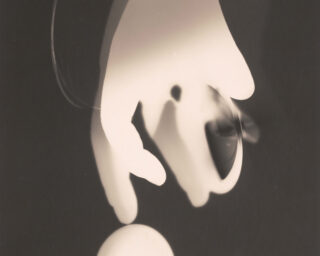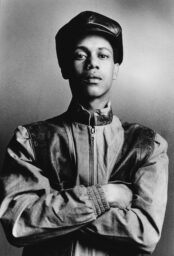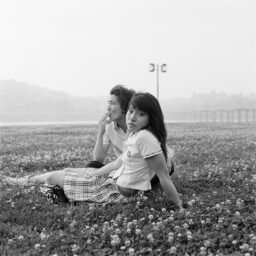Photo.edu: Toward a New Curriculum by Arthur Ou
“The camera has offered us amazing possibilities. […] We are only beginning to exploit them; for although photography is already over a hundred years old it is only in recent years that the course of development has allowed us to see beyond the specific instance and recognize the creative consequences.” This proclamation, made by László Moholy-Nagy, one of the progenitors of contemporary photographic education, resounds perhaps even more meaningfully now than when it was uttered in 1925. Nearly a century later, photography is again at an unprecedented historical threshold: a moment unlike any in its 170-year history.
At this juncture, the role and definition of photographic education are of particular concern. What is photographic education today? The question elicits a wave of differing, often contesting answers. While it is generally understood that photography is teachable, the spectrum of pathways by which it is approached—as an art, as a medium or a set of techniques, as a field or an industry—complicates the pedagogical strategies that lead to a cohesive answer. And there are of course the inevitable debates within the realm of photographic education: the viability of analog processes, the necessity of the printed image, commercialism versus artistic expression, photography’s relation to other media, documentation versus invention, the question of upholding a medium-specific curriculum, and so on. Such ongoing arguments have led to a variety of distinct educational philosophies and curricular programs in the United States and abroad. And certainly the most complicating factor in all of these discussions is that the definition of photography itself has, in recent years, been wondrously, perturbingly, bewilderingly altered.

Takeshi Murata, 3 AM, 2012. Courtesy of the artist and Saon 94, New York. Murata’s computer-generated series of photographs, Synthesizers, begins with backgrounds “sculpted” by the artist using 3-D software he learned to use through online tutorials. The “sets” are then filled with readymade 3-D elements purchased online.
The history of photographic education is admittedly rather brief, not counting the many instances from the medium’s inception in which techniques were taught through apprenticeship and training, evolving into photo-clubs and photo-societies. The first institutional instance of photographic education occurred at the Bauhaus, where Walter Peterhans was appointed to teach courses in photography in 1929. A decade later Moholy-Nagy brought photography to the Institute of Design at the Illinois Institute of Technology in Chicago, after the Bauhaus was forced to cease operation by the Nazi regime. In 1946 he invited Harry Callahan to the I.D. to teach photography; Callahan made a lasting impact during his Chicago tenure and was subsequently appointed head of the newly established photography degree program at the Rhode Island School of Design in 1961. Other seminal photography programs were established in the 1940s: at the California School of Fine Arts (now San Francisco Art Institute) by Ansel Adams and Minor White; at Ohio University by Clarence White, Jr.; and at Indiana University by Henry Holmes Smith. Needless to say, BFA and MFA programs in photography have proliferated ever since.
It is illuminating to note that many of these pioneering photographic programs were housed not in art academies but within umbrella schools and programs focused on industrial design and technology. A sampling of contemporary programs offered in the United States shows that degrees in the “practice” of photography can be found in departments of art, design, media, journalism, and fashion, as well as technology and science. Not surprisingly, the study (and research) of photography in technology programs is on a radically changing path today. To explore the medium through such vehicles as computational photography, imaging research, and computer vision brings us closer to the societal and cultural uses of photography; furthermore, these modes in turn are broadly shaping the medium’s current applications and practices, while also pointing toward photography’s future.
How do we tackle a medium in the process of breakneck evolution in the photography classroom today? We now live in a world full of photographs, or, more precisely, the world is rapidly becoming a totality of photographs. To expand on this claim, we need only consider two related trajectories in the area of “mechanical vision.” One is the eventuality of photography replacing human perception. It is not a stretch to imagine, in a not-too-distant future, mechanical vision (and the recording and presenting of this vision) reaching an event-horizon, ultimately replicating in exactitude the sensations and experiences of our biological eyes. Secondly, photography will surpass human vision. Already, something resembling photography—not quite the medium as it is defined—is replacing what we have long understood as photography. When computer-generated processes can “pre-image” something that will eventually be actualized—when photographs “imagine” the future or another reality—how do we define this type of image in the photographic lexicon? Who or what is the photographer? Where does a photograph begin? Where do photographs end?
These are pertinent pedagogical questions that programs providing photographic education now have an obligation to address. The teaching of photography—beyond application-centered focuses such as “fine art,” “documentary,” or “fashion” —has a new duty to encompass not only philosophical but technological engagements with the larger curriculum. (This is truer with photography than with other media since photography is always intertwined with the technological.) Above all, it would seem to be necessary for programs in photography to instill a sense of experimentation, more so now in this uncharted period in the medium’s history. One thinks here of Harold Edgerton, professor of electrical engineering at the Massachusetts Institute of Technology from the 1940s to the ’70s, whose extensive experiments with stroboscopic photography greatly impacted our understanding of time (and its photographic capture), and the possibilities he would have inspired in a classroom full of photography students. Such curricular crossovers are clearly even more exigent in our time.
When considering photographic education today, one might look further back than the history of the photographic medium itself, to ponder the forty-thousand-year-old human impulse to replicate our perceptual experiences. The first prehistoric cave paintings—the earliest “proto-photographic” pictures— gave the viewer an alternate (and unprecedented) version of the experience of seeing animals that were not actually there. They also provided a means to share the experience of seeing with others. These ardent impulses—to preserve experience and to share seeing—led to photography’s invention, and have been driving the myriad developments of photographic technologies and theories throughout its history. It is not the amalgamation of processes, both obsolete and emerging, that defines photography, but rather the impulse to record, to depict, to share.
In recent decades, however, our understanding of these impulses has undergone important transformations. As early as 1965—still in the initial stages of institutionalized photographic education—anthropologist Pierre Bourdieu stated in Photography: A Middle-Brow Art: “Photography owes its immense diffusion to its social function. […] More than any other cultural practices, the practice of photography appears to respond to a natural need.” The power of the medium’s “social function” has been evidenced recently, of course, in the incalculable numbers of images taken and sent through mobile and networked devices by participants in historic events from the Arab Spring uprisings to the Occupy Wall Street activities.
The bulk of photographic images today are not “taken” so much as “computed”; this is one of the main concepts that differentiates contemporary photographic education from that of the past. We now take for granted premade software (such as Photoshop) and hardware (notably digital cameras and cellphones)—tools with a set of available features at our immediate disposal—without thinking of the vast predetermined programming that went into their design. To advocate for a medium-specific curriculum in photography today, this less considered “back end” of photography will surely have to be addressed and incorporated into the course of study. What’s hidden beneath the user interface or the sleek camera casing needs to be exposed, not only made visible and comprehensible to the photographic practitioner, but also taken apart, deconstructed, and mined for creative potentials.
To do this, it is useful to look toward the research and projects being conducted in places like the MIT Media Lab and Stanford University’s computer-science program, whose activities have been instrumental in advancing paradigmatic shifts in photography. As an example: the Camera Culture research group at MIT’s Media Lab, in a departure from “line of- sight” photography, is focusing on what is known as “femto” mapping—using extremely short and accurate bursts of laser light (photons) and tracing the movements of these photon particles in order to visually map what is around corners. For many practitioners and educators of photography, drawing such parallels between the medium and the realm of computation is unsettling; however, this is part of the reality we inhabit presently and for the foreseeable future. As computing power increases, new possibilities will upend what we have come to understand as photography and begin the process of charting out the still unknown future of the expanding medium. These progressions are key to laying the groundwork for a new era in photographic education.
But technology is only one side of the pedagogical coin. The other necessary component in photographic education is to provide a context for these technologies within the broader cultural landscape and to remain constantly aware of their cultural impact. Much can be drawn from Vilém Flusser’s notion of the “photographic program,” explicated in his 1983 book Towards a Philosophy of Photography, a theory that totalizes photographic processes: the camera operator is but a small part in an all-encompassing mechanism. Today that mechanism encompasses everything from the manufacture of the capture and output devices to the photographic materials used to the eventual outlets (newspapers, magazines, the Web, and so on) through which photographic images are disseminated: channels that are increasing exponentially, at speeds unimagined at the time of Flusser’s formulation of his theory.
A crucial aspect of teaching photography now is to inform students producing images with intention that the urgent task of the photographic producer is to acknowledge and counter the unending torrents of images, and to forcefully and meaningfully respond to their own individual impulse to record, to depict, or to render. Then, like the prehistoric cave-painters, they can share their perceptual experiences against the limits of what’s possible.
—
Arthur Ou is an artist and writer based in New York. He is currently the director of BFA Photography at Parsons The New School for Design. His work is on view through June 9 in a solo exhibition at Brennan & Griffin, and in a three-person exhibition at P!, both in New York. Ou was recently included in the 2012 Daegu Photo Biennial, and organized the April 2013 Photographic Universe II conference.
























